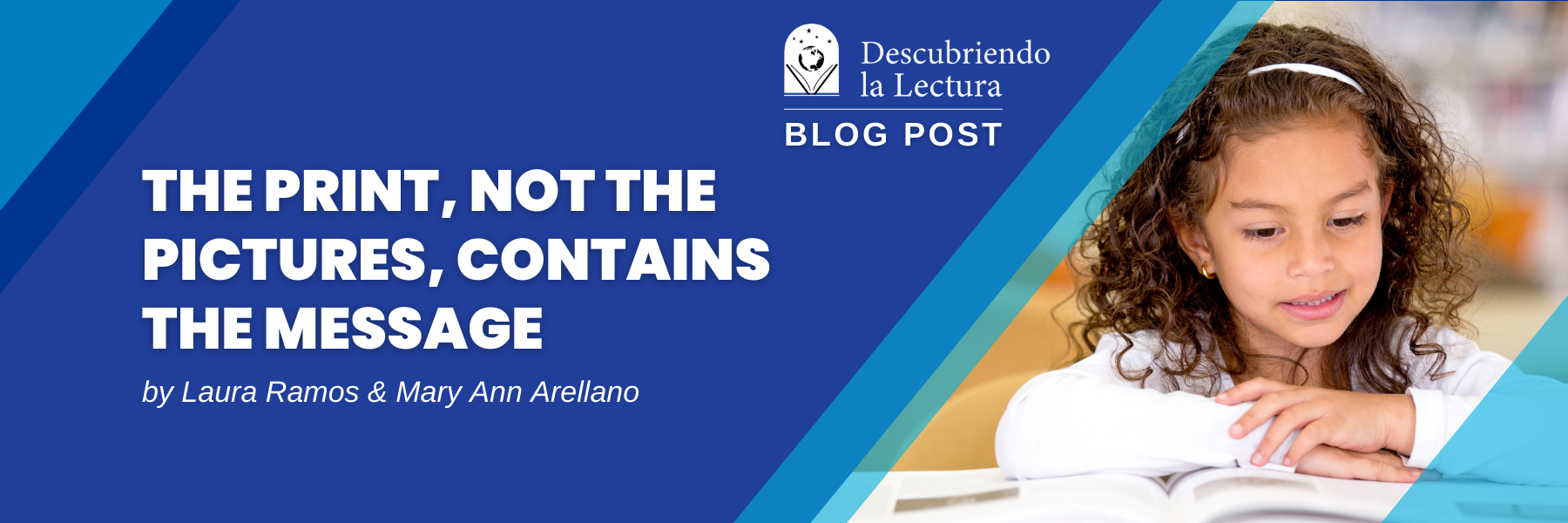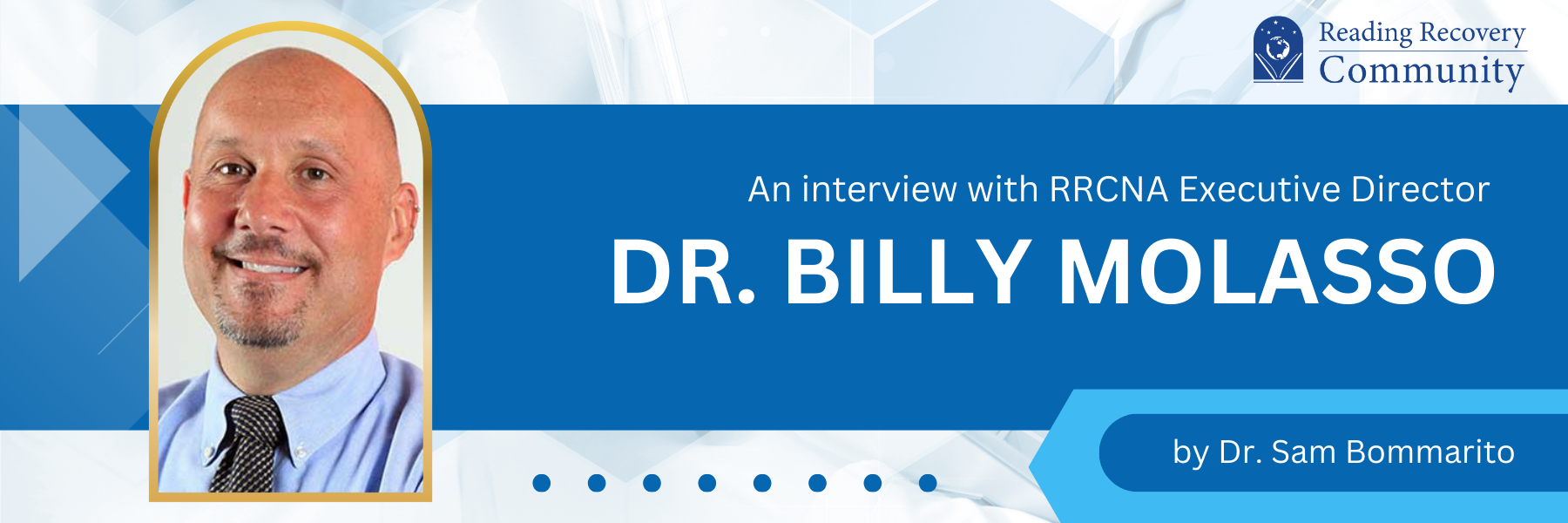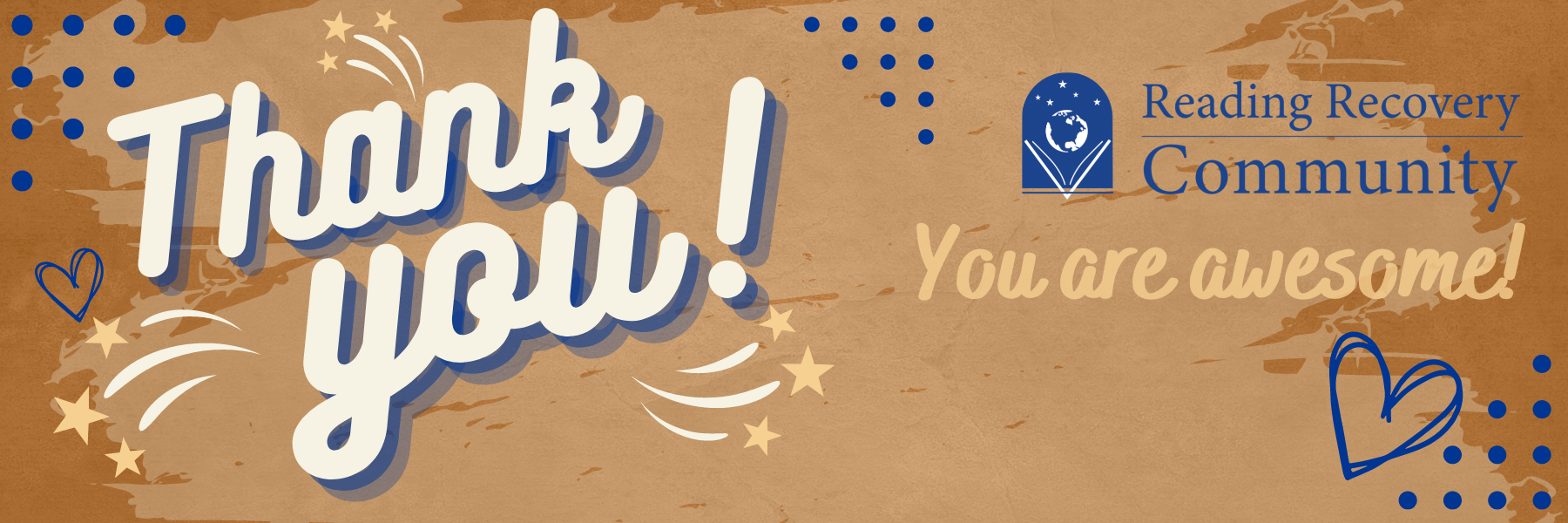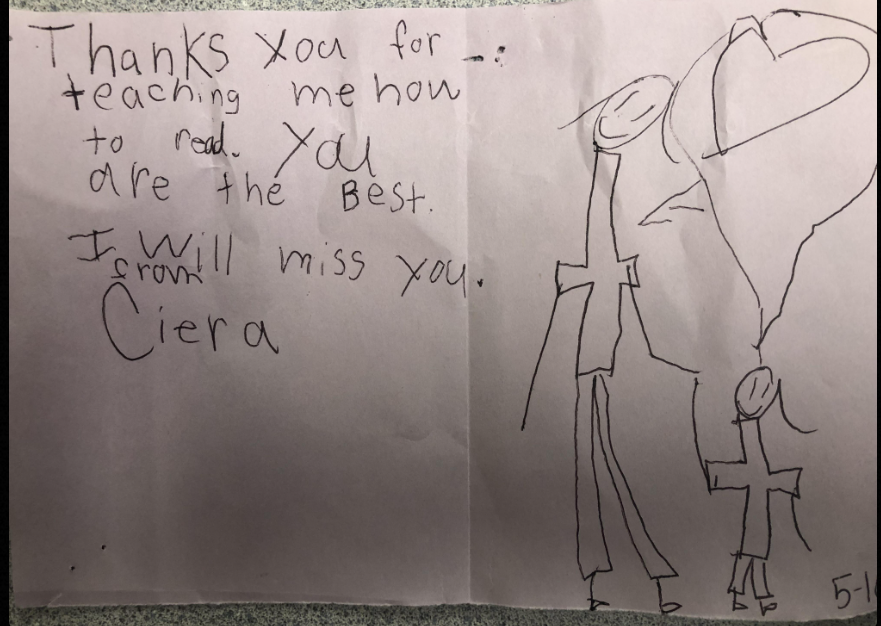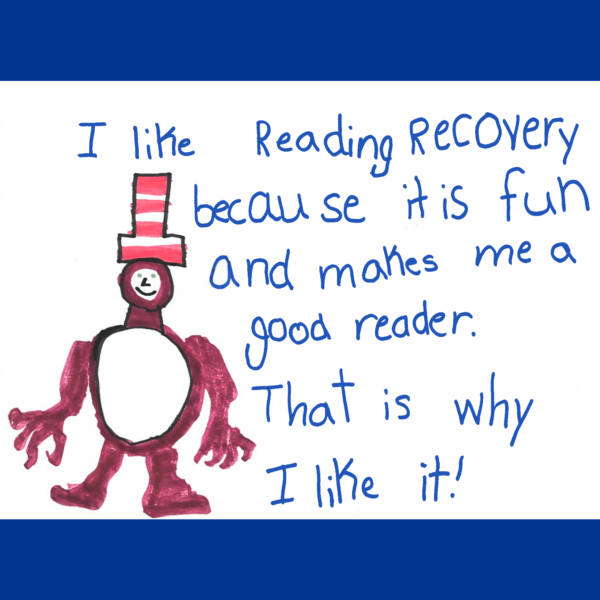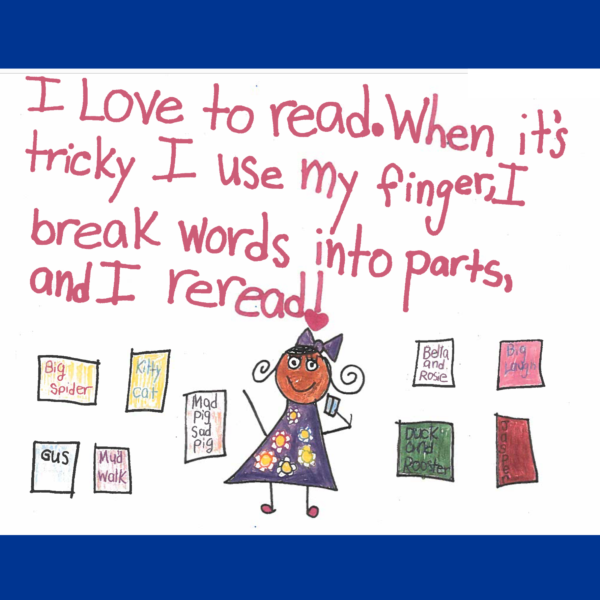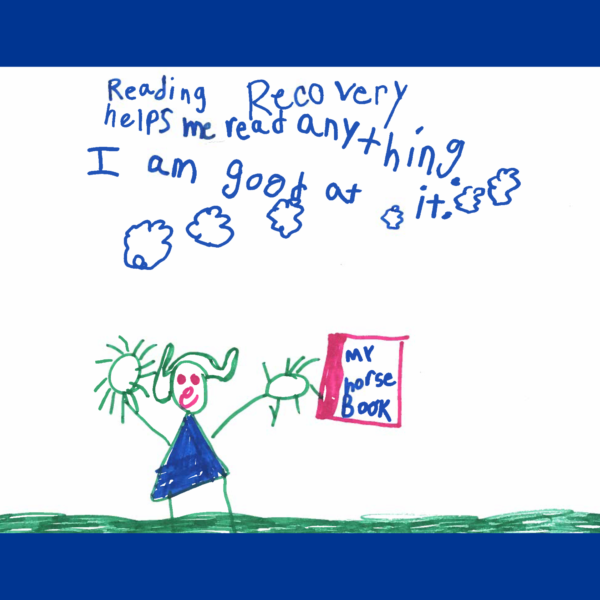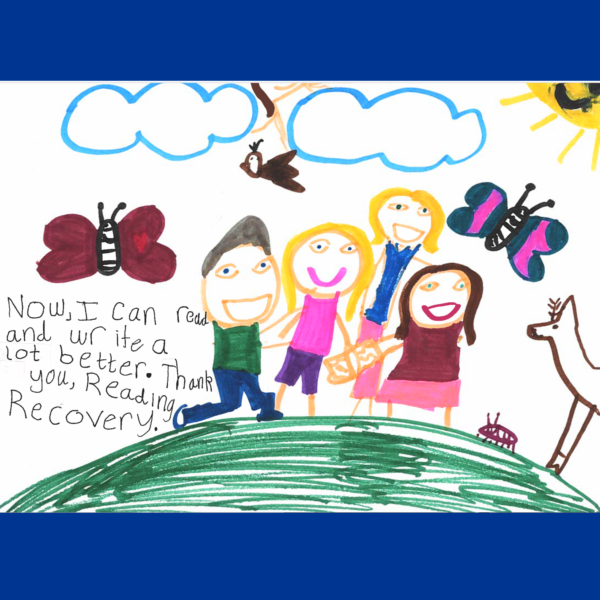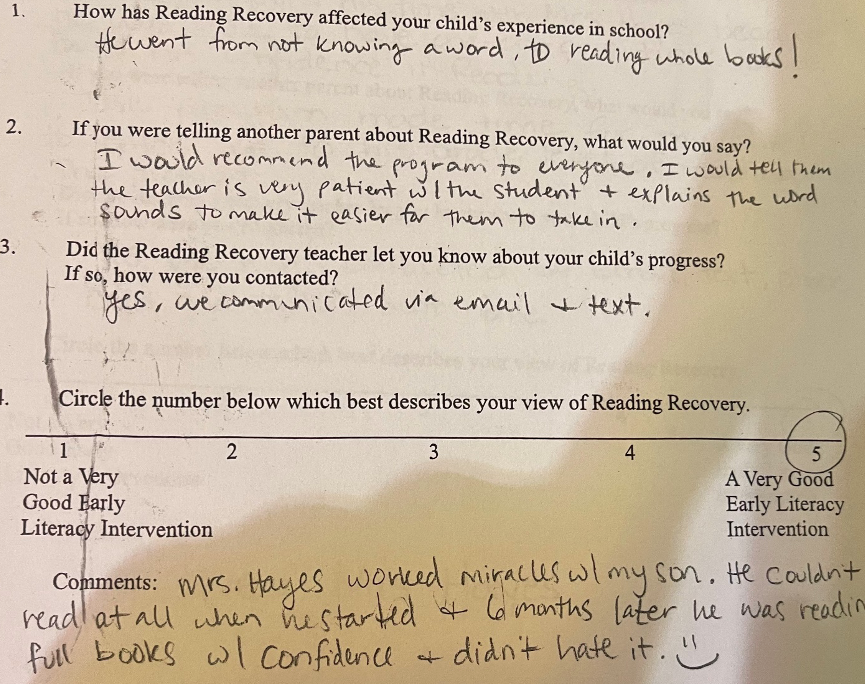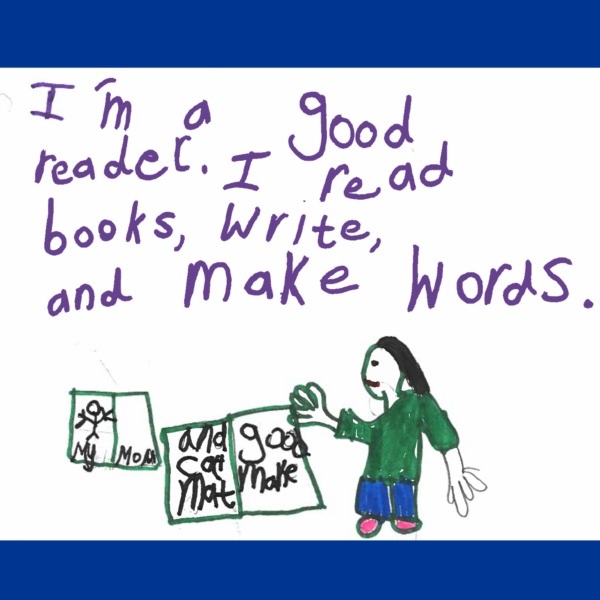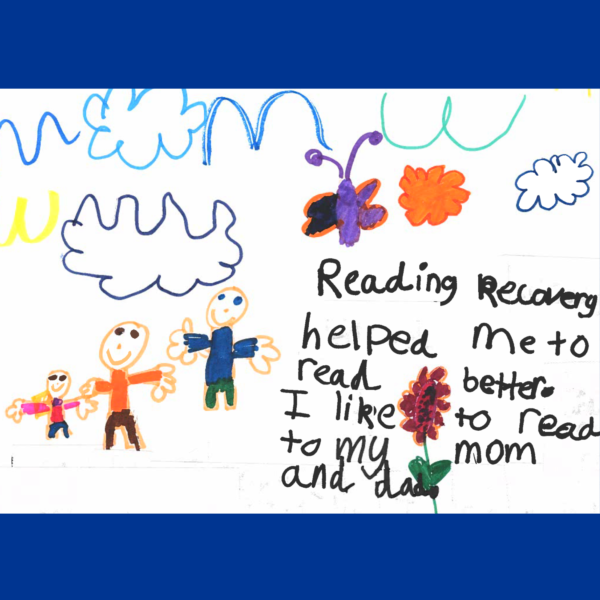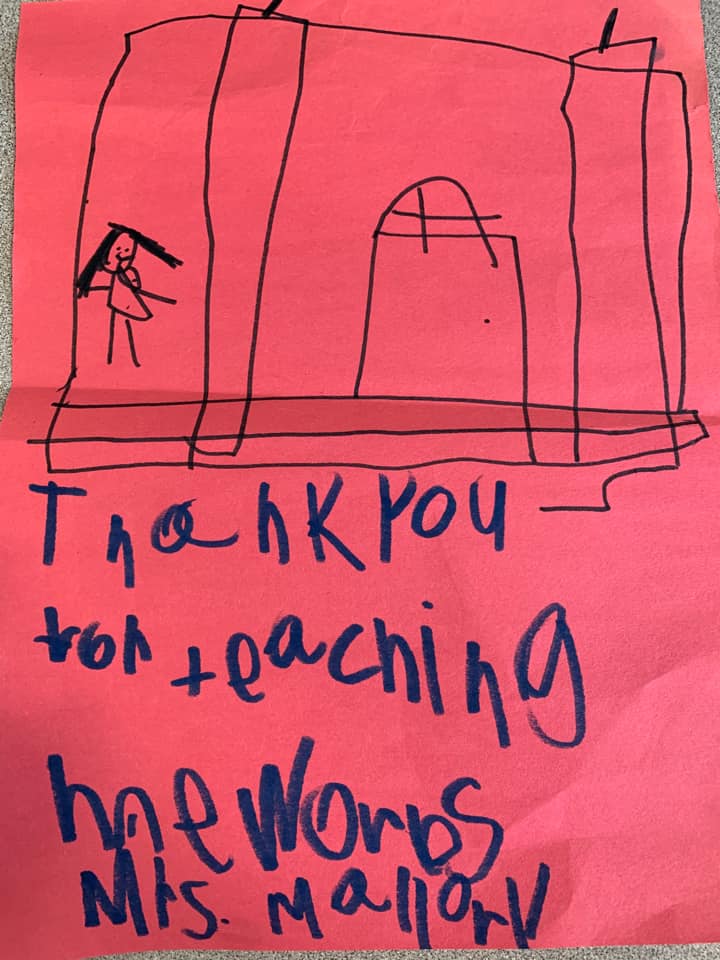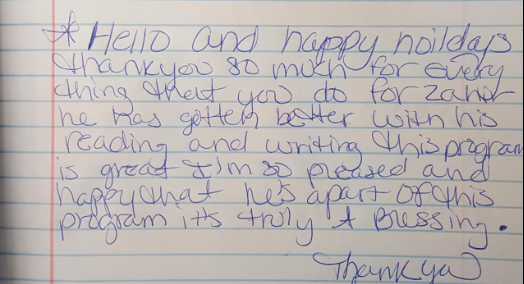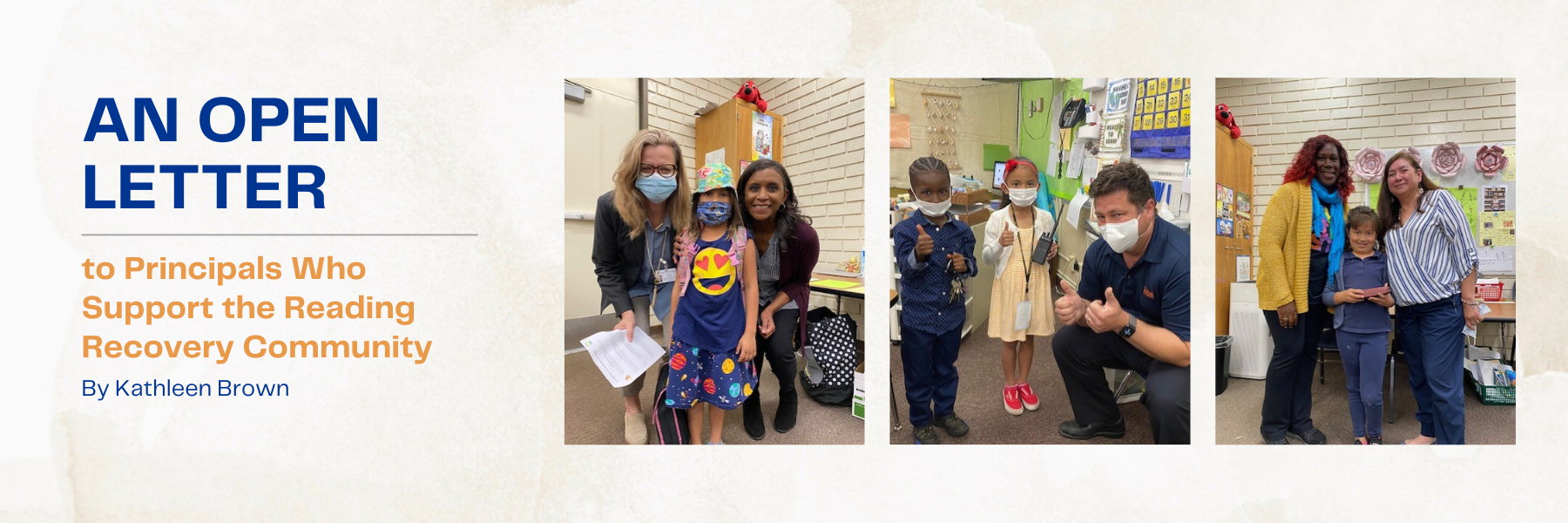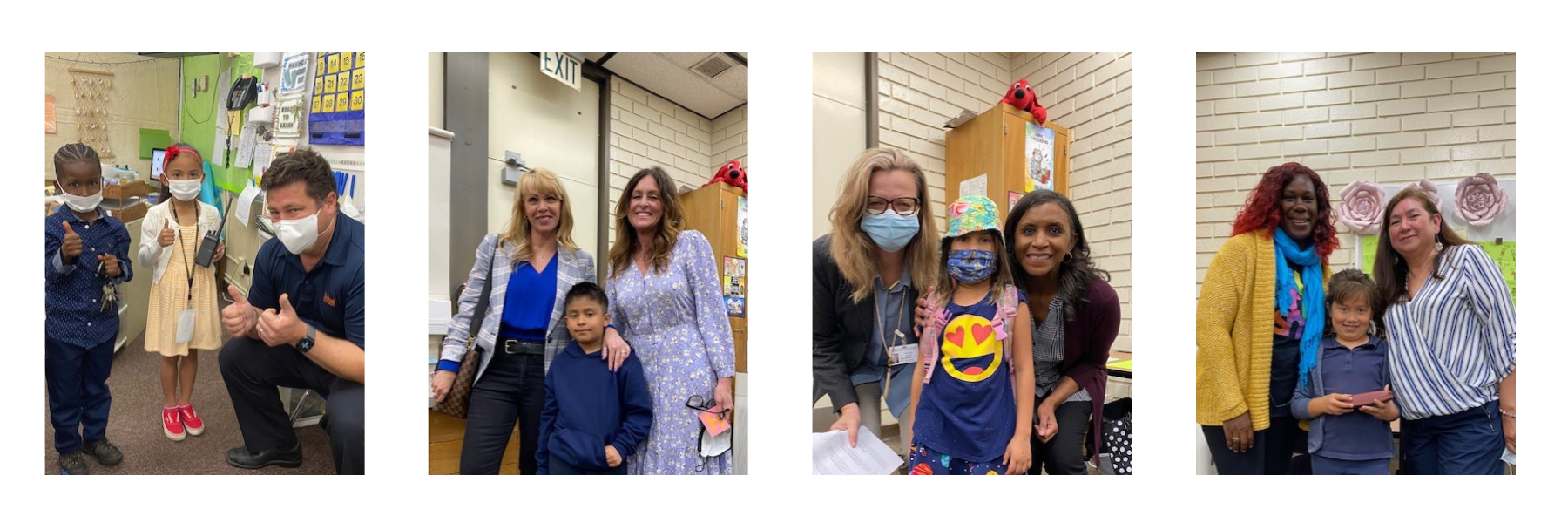The Print, Not the Pictures, Contains the Message
By Laura Ramos & Mary Ann Arellano
Descubriendo la Lectura (DLL) is designed for first graders having difficulty learning to read and write in classrooms where literacy instruction is in Spanish. For more information, visit https://readingrecovery.org/dll/.
After reading bicicleta (bicycle) correctly in a new text, Juan stops and excitedly says, “Maestra, si quito cleta, dice bici. Yo siempre digo bici.” (Teacher, if I take the cleta away, it says bici. I always say bici). He then continues reading, proud of this new discovery.
Juan’s journey in DLL began in February of 2023. He entered DLL with a very primitive understanding of how print works. He was able to identify 58 letters, and he could write 18 simple (mostly 2-3 phoneme) high-frequency words. The numerous omissions of phonemes when attempting words that consisted of more than three phonemes indicated that listening for sequences of phonemes in longer or multisyllabic words was still in development. Juan scored 9/25 on the Concepts about Print task. His interactions with the CAP booklet revealed that he did not appear to understand that print contains the message and that he was still negotiating the concept of letter and word. His inability to attend left to right across a word made it difficult for him to detect any changes in word or letter order, and, as a result, he could not match 1:1 or read the level 1 text.
Given that his strengths were writing vocabulary and letter identification, his DLL teacher hypothesized that developing his ability to hear and record phonemes in sequence (phonemic awareness) while extending both his reading and writing vocabularies might be an entry point for Juan to engage with print more effectively.
In the first lessons after ‘Roaming around the known’, Juan learned to clap words and listen to their parts. He also learned how to say words slowly and attend to the sequence of phonemes independently. This prepared him for the introduction of Elkonin boxes. Juan quickly learned to manipulate counters while listening attentively to the sequence of sounds.
One day, while attempting fiesta in writing, Juan slowly articulated the word while moving his finger under the sound boxes. He then quickly recorded “ fyesta.” His uncomfortable gaze seemed to indicate that he was quite certain that something was amiss.
T: ¿Qué piensas? (What do you think?)
J: Pointed to the y and said, “No es la y.” (It’s not the y.)
T: “La y se oye bien pero no se ve bien.” (Y sounds right, but it doesn’t look right) “La /ie/ en fiesta se ve como la palabra bien que sabes escribir.” (The /ie/ in fiesta looks like a word you know how to write). This short interaction allowed Juan the opportunity to hear the diphthong and consider how it is similar to the /ie/ embedded in a word he can read and write. By slowing down to listen carefully to the sequence of phonemes, he was better equipped to consider both the sound sequence analysis and the visual letter analysis and come to understand what sequences are and are not possible in Spanish. “The brain is required to listen for and find the sounds and, in an instant, link these to appropriate letters.” LLDI pg. 93.
During the reading of a new text, Juan encountered the word brazos (arm). He initially attempted barri, possibly predicting (not guessing) barriga (belly) based on the context, dad’s chunky stature in the picture, and based on some of the print details. Juan appeared to detect that the sequence of letters in the text did not match the prediction in his brain. He quickly adjusted his response to match the word in the book. It appears that he was developing the understanding that it is important to check the sound sequences against letter sequences when evaluating his predictions in reading. “Cross-checking occurs when the child can hear the sounds in a word he speaks and checks whether the expected letters are there.” LLDI pg. 136.
During the reading of the running record, Juan predicted the word controló(control)/consolar (console). This initial substitution not only fit the context of the story, but it was also incredibly visually similar. He immediately self-corrected at the point of error.
T: Curious as to what the child noticed, asked “¿Cómo sabes que ésta palabra no es controló?” (How do you know that this word isn’t controló?).
J: Pointed to the s and responded, “No tiene la t.”(It doesn’t have a t) Clay reminds us, “They are not just guessing. They are computing the likelihood of the features that they recognize belonging to the word they have predicted.” LLDI pg. 145. This also seems to indicate that he carefully considered both sound sequences and letter sequences in order to verify his response since both words fit the context. He was effectively using print detail from left to right across the word. “A left to right scanning through a word is critical in reading because letter order matters.” LL pg. 147.
As Juan’s phonemic awareness skills became stronger, his DLL teacher noticed that his reading and writing vocabularies also began to expand. “And it is clear that becoming aware of phonemes is essential for becoming good at word recognition (Ehri & Sweet, 1991)”. LLDI pg. 93. These known words in reading and writing became useful in helping him solve unknown words.
While composing, Juan wanted to write audifonos. Although he made the decision to put this new word in boxes, he was unsure of how to record the diphthong/au/.
T: “¿Haz escuchando otra palabra que se escucha como audífonos?” (Have you heard a word that sounds like audífono?) “The child needs to hear how this new word sounds like a word he already knows.” LLDI pg. 105.
J: ¡Auto!
T: “¡Si, audifonos empieza como auto!” (Yes, audifonos starts like auto!) T demonstrates the similarity in a familiar book with the word auto.
In this interaction, Juan was able to use a word he had read in a familiar book to help him solve a novel word in writing. “Massive practice with text reading also builds a network between letter sequences and sound sequences between what is seen and what is heard. This massive practice allows the visual perception to become quick, efficient, and automatic, allowing the reader to focus on context and read with fluency.” LLDI pg. 112.
During the reading of a new text, Juan stopped at the word mientras. After failing to initiate a response, the teacher interjected and broke the word into syllables with a small card.
T: “¿Conoces una palabra que parece a ésta?” (Do you know a word that looks like this?)
J: Thought for a moment, then responded “İMielİ, İComo en el libro de Osito Marcos!” (Miel! Like in the Baby Bear book!) Mien….tras! He went on to comment, “Y tras es como tres!” (And tras looks like tres!)
Two things were helpful. First, when Juan stopped at the new word, mientras, the teacher prompted him to look at the print, searching for something that he knew about that word. Second, the teacher broke the word into a useful cluster, allowing Juan an opportunity to access his personal core of known. This may have been particularly useful given that the word mientras has three consonants in the middle. The break made the syllables more accessible to Juan. The syllable break may have also contributed to Juan noticing the tras cluster in mientras and linking it to tres! How smart is that! “Knowing many high-frequency words increases the child’s resources for solving new words in both reading and writing by analogy with words he already knows,” LLDI pg. 153.
Twelve short weeks later, Juan read the text level 18 fluently. He demonstrated the ability to solve flexibly by using both the print and the context. For example, when he encountered the word transformo, he said trans slowly and then quickly segmented the for-mo. When he encountered the word aguantamos, he segmented a-guan-ta-mos quickly while integrating the meaning and structure. “When the child’s series of lessons ends and he is reading a text of appropriate level he should be able to solve a multisyllabic word (one that is new, not yet familiar, or unexpected) within continuous text without slowing up too much and by working flexibly with word parts and clusters of letters from an awareness of how words work.” LLDI pg. 126. On the writing vocabulary task, Juan wrote 46 words. He demonstrated the ability to manipulate phonemes in creative ways while working with similar spelling patterns. For example, he wrote: para-pero, mira-miro-mire, caminar-mirar, dos-los, veo-velo. Juan scored 22/25 on CAP. His almost perfect score and his interaction with the test booklet indicate that Juan clearly understands that print contains the message. In fact, he was so attentive to letter sequences that he quickly detected the changes in letter order (vool/voló, auga/agua).
In closing, Juan’s DLL lessons helped him learn to look at print in efficient and effective ways by incorporating phonemic awareness, phonics, and problem-solving behaviors that enabled him to decode unknown words in flexible ways while reading and writing authentic continuous text.
Laura Ramos and Mary Ann Arellano are both RR/DLL Teacher Leaders in Amarillo ISD.

